| Femmes Fatales | Jan 15 2024 |

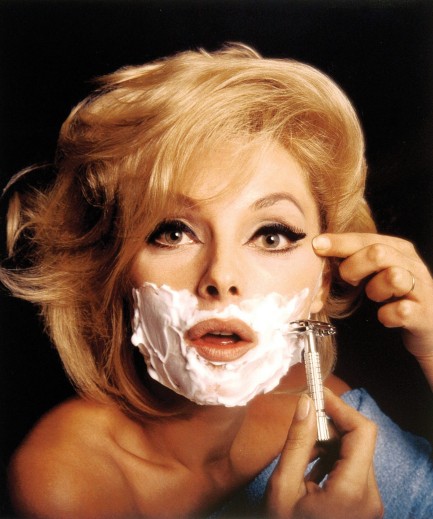
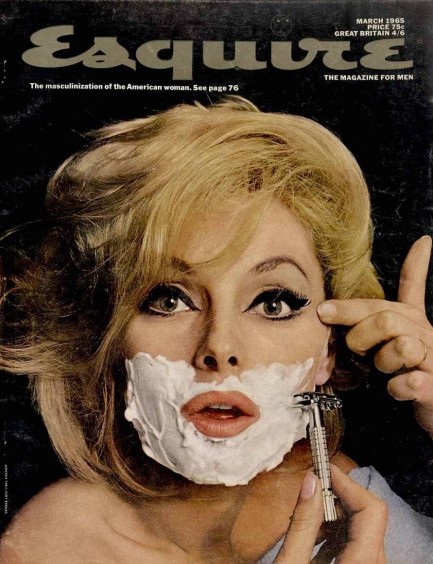 Virna Lisi made every photo amazing just by being in them, which is probably why Esquire magazine conceived this gender blurring idea in 1966 as a humorous commentary on her legendary beauty. Even with her face half covered Lisi still looks as good as ever. We doubt even a beard would have made much of a difference. We've included the magazine cover, as you see, and the photo is slightly different (if you can spot how, thumbs up for you). The issue is considered collectible today, and the image has even made it onto t-shirts. We've featured Lisi multiple times, including here, here, here, and here. All the shots are excellent.
Virna Lisi made every photo amazing just by being in them, which is probably why Esquire magazine conceived this gender blurring idea in 1966 as a humorous commentary on her legendary beauty. Even with her face half covered Lisi still looks as good as ever. We doubt even a beard would have made much of a difference. We've included the magazine cover, as you see, and the photo is slightly different (if you can spot how, thumbs up for you). The issue is considered collectible today, and the image has even made it onto t-shirts. We've featured Lisi multiple times, including here, here, here, and here. All the shots are excellent.
| Femmes Fatales | Apr 12 2022 |

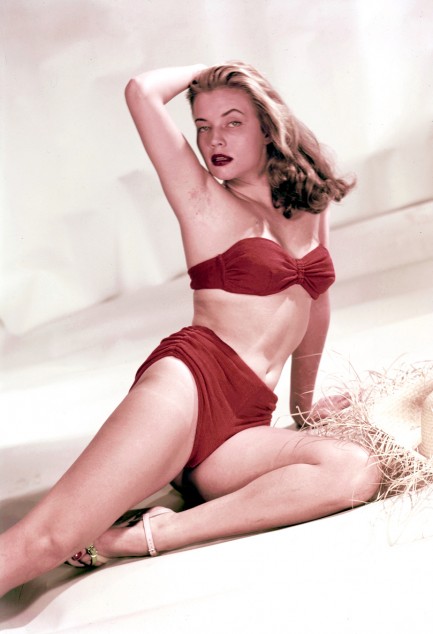
This scan made from a 35-millimeter slide shows Hungary born actress Ava Norring, who had exactly one credited role—that of Beatrice in 1952's The Snows of Kilimajaro, in which she appeared with her more famous namesake Ava Gardner. She later was featured in an eight page Esquire photo essay published in July 1955, but stardom was not to be. We love this shot, underarm razor burn and all. We haven't seen The Snows of Kilimajaro, but we're curious about it. The 1936 Ernest Hemingway work upon which it's loosely based is a short story (touching on standard Hemingway themes we discussed a while back), and it's always interesting to see how filmmakers flesh out something so slight. We'll get to the movie at some point, see both Avas in action, and probably report back.
| Vintage Pulp | Jul 3 2020 |

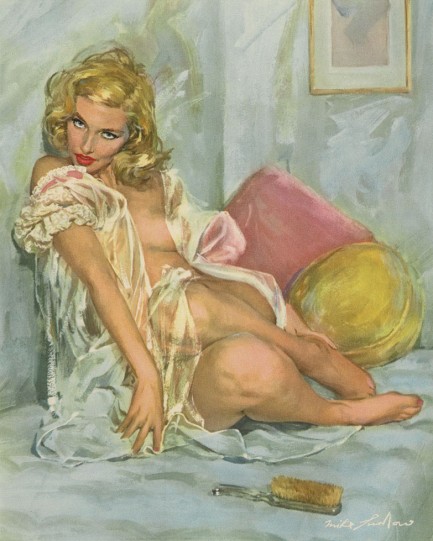
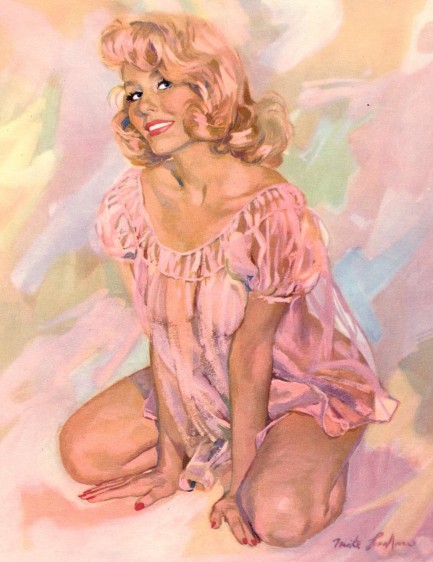
| Vintage Pulp | Mar 25 2020 |

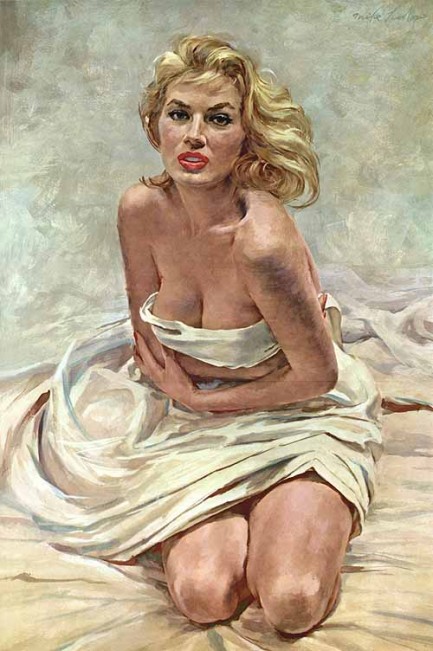
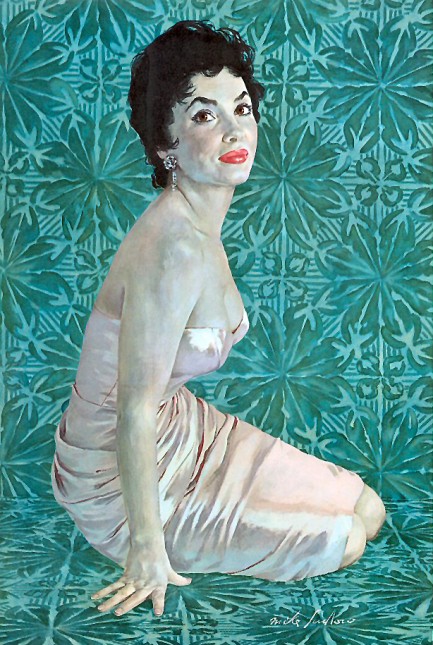
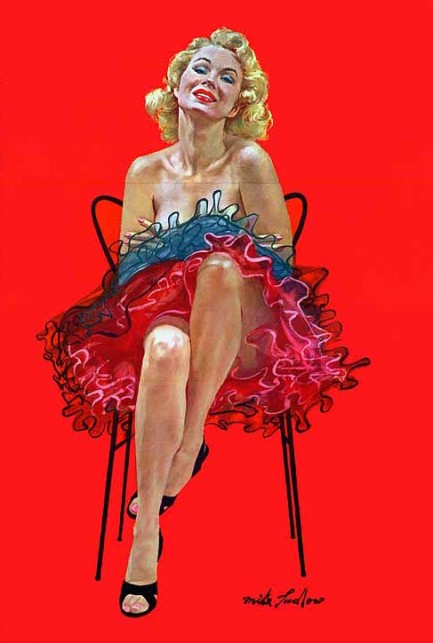
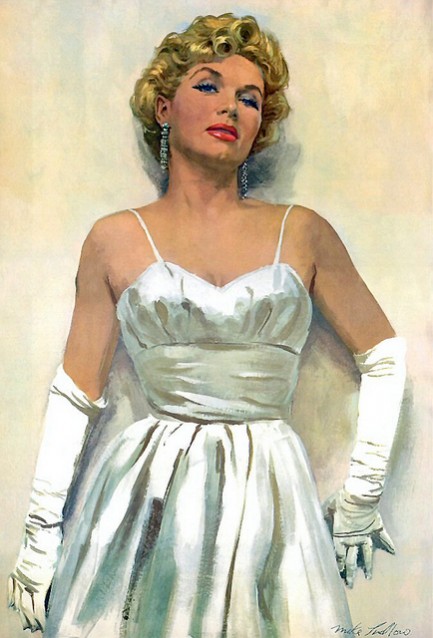
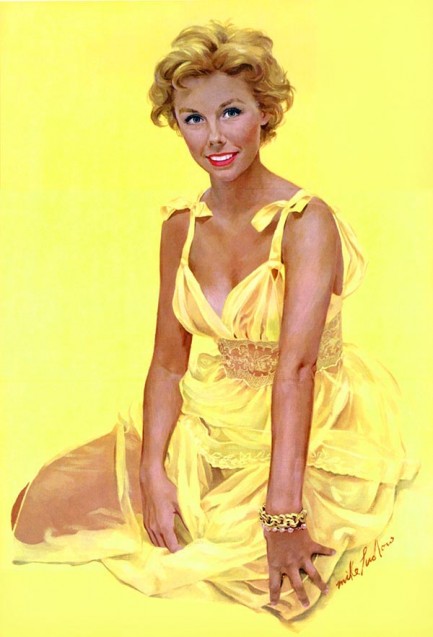
| Vintage Pulp | Jul 15 2018 |

Below, every month from a Varga calendar published in Esquire magazine in 1948. Varga, aka Alberto Vargas, as you probably know was a top pin-up artist through the ’40s, ’50s, ’60s and ’70s. We have another complete calendar at this link, a movie poster here, and an interesting historical curiosity here.
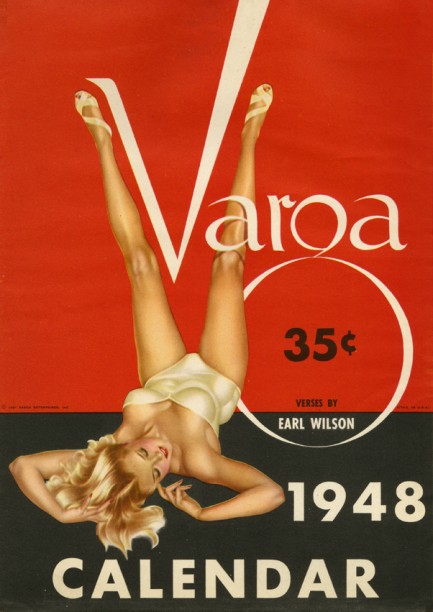
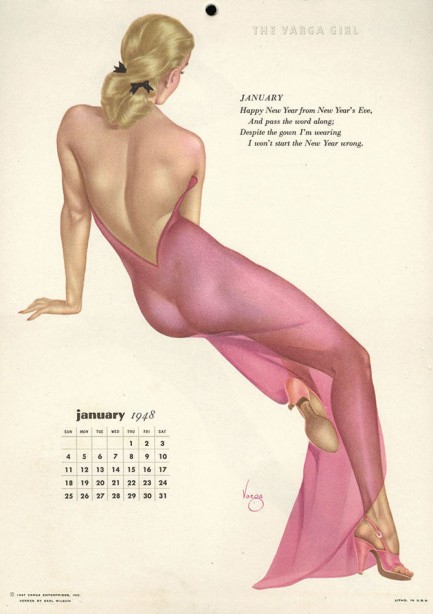
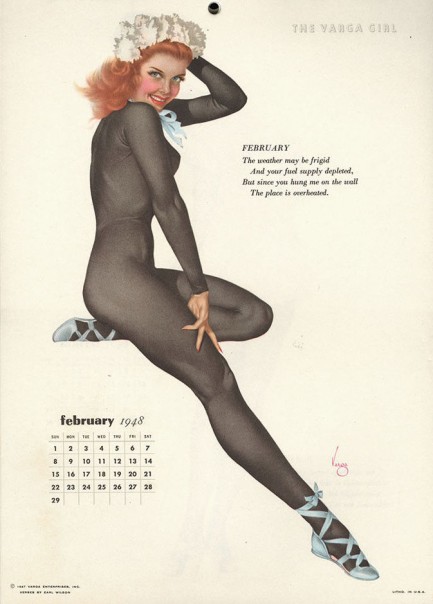
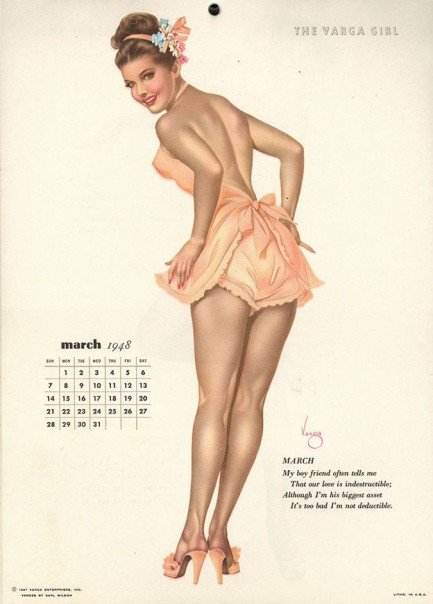
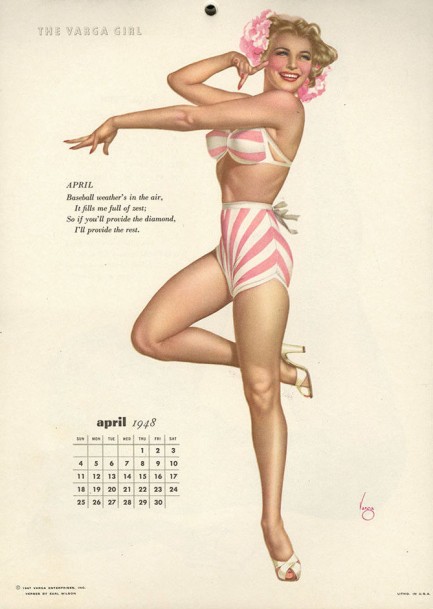
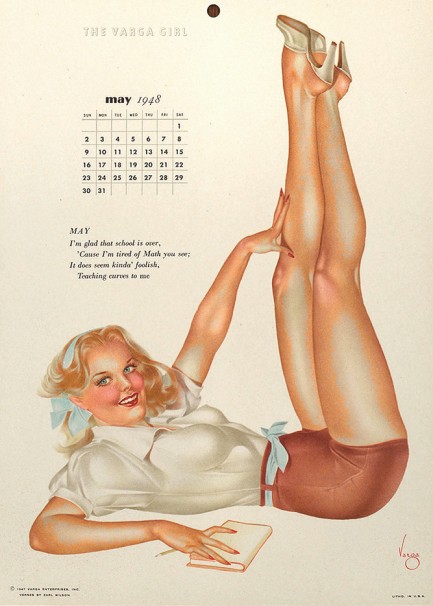
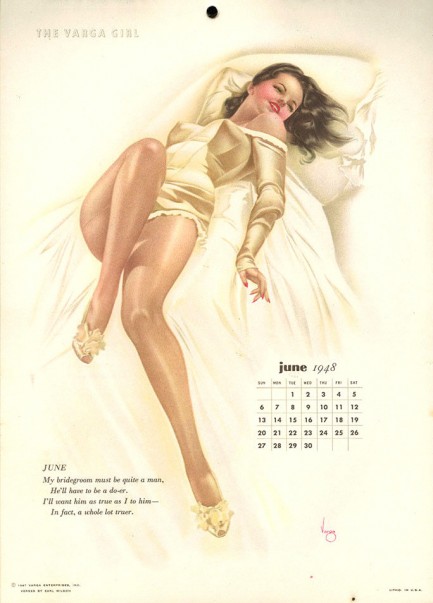
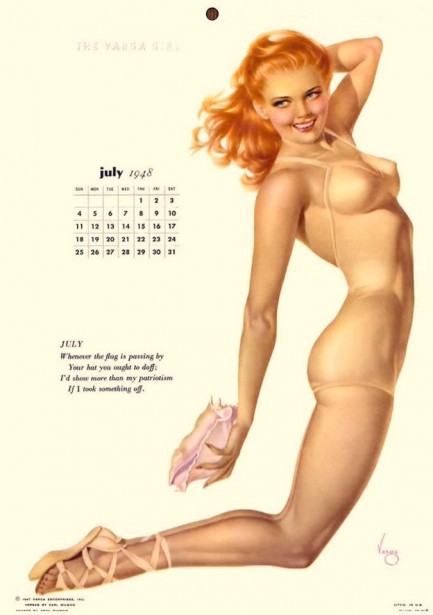
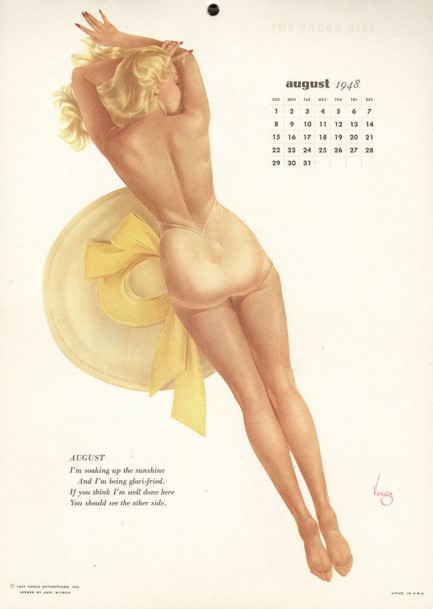
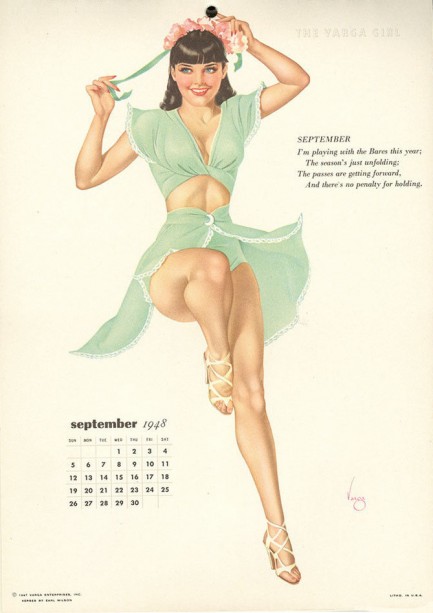
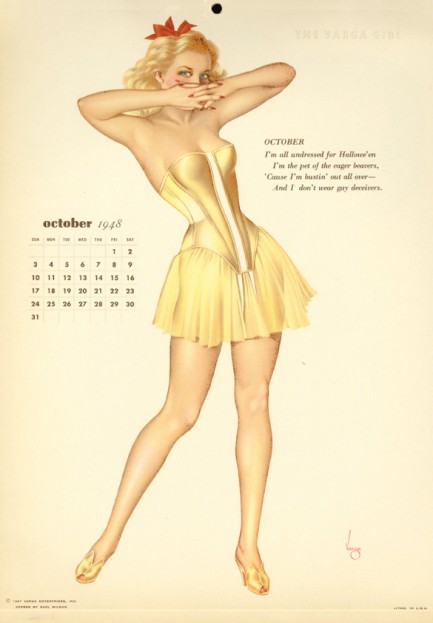
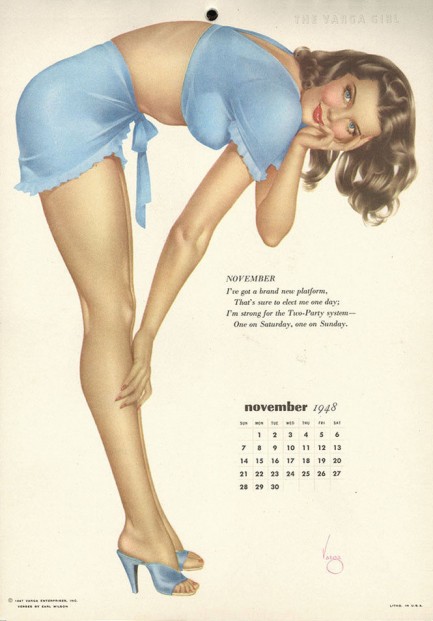
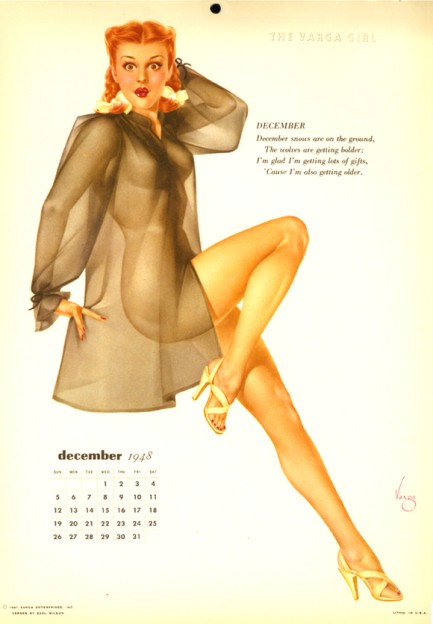
| Femmes Fatales | Apr 26 2018 |

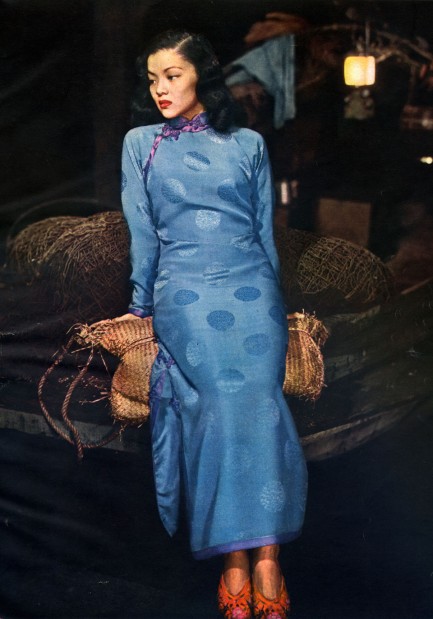
| Vintage Pulp | Oct 28 2015 |

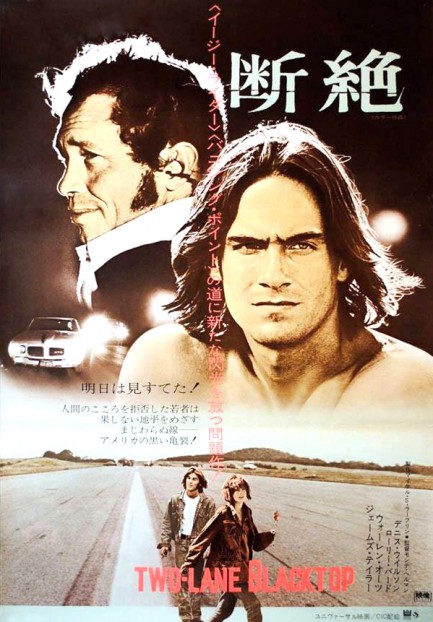
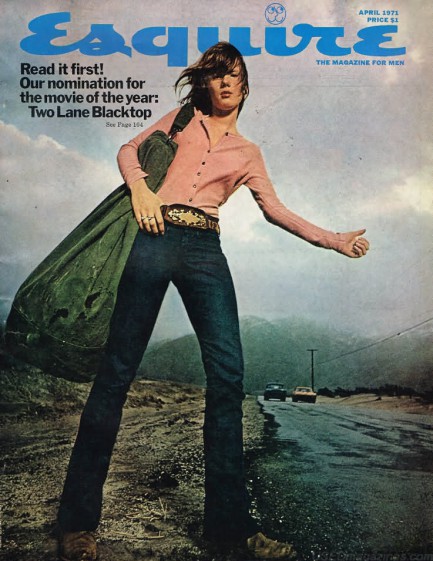 Esquire magazine called Two-Lane Blacktop the movie of the year and devoted a cover to it, and many other critics also lent their applause. It was directed by Monte Hellman and stars James Taylor, Dennis Wilson, Warren Oates, and nineteen-year-old Laurie Bird in a story of two hot-rodders who bet their cars on the result of a head-to-head cross country race. A similar movie had hit American cinemas months earlier in the form of Richard C. Sarafian’s Vanishing Point, but Two-Lane Blacktop not only has the usual feeling of road movie nostalgia due to its celebration of a peculiarly fragile type of freedom, but because it features an actress, also peculiarly fragile, who later committed suicide. Her role—all twenty or so lines of it—is iconic, even eternal, in our opinion. She’s the only one in the film who is completely free.
Esquire magazine called Two-Lane Blacktop the movie of the year and devoted a cover to it, and many other critics also lent their applause. It was directed by Monte Hellman and stars James Taylor, Dennis Wilson, Warren Oates, and nineteen-year-old Laurie Bird in a story of two hot-rodders who bet their cars on the result of a head-to-head cross country race. A similar movie had hit American cinemas months earlier in the form of Richard C. Sarafian’s Vanishing Point, but Two-Lane Blacktop not only has the usual feeling of road movie nostalgia due to its celebration of a peculiarly fragile type of freedom, but because it features an actress, also peculiarly fragile, who later committed suicide. Her role—all twenty or so lines of it—is iconic, even eternal, in our opinion. She’s the only one in the film who is completely free.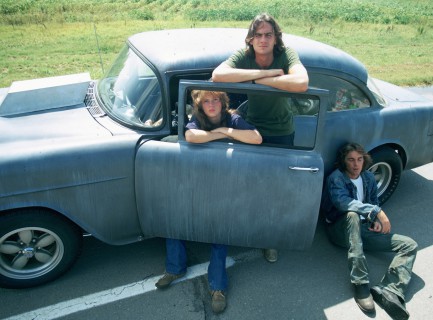
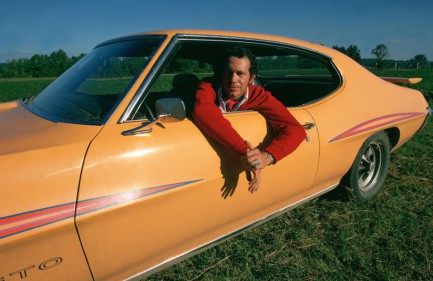
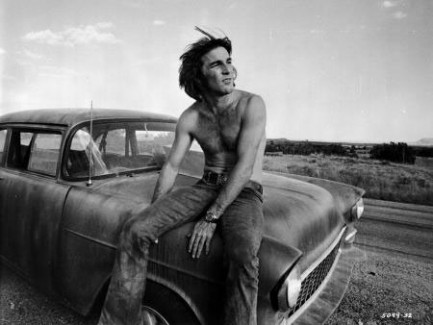
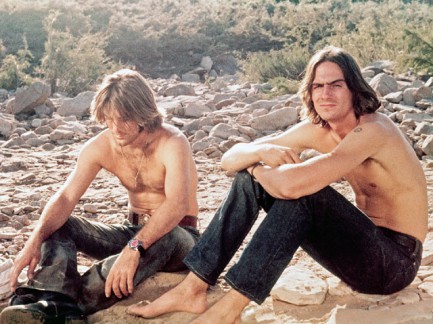
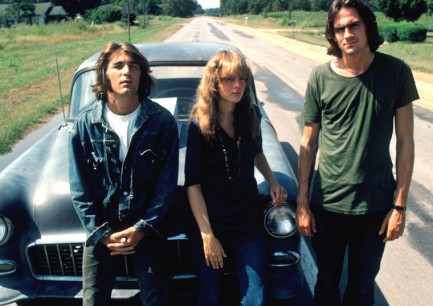
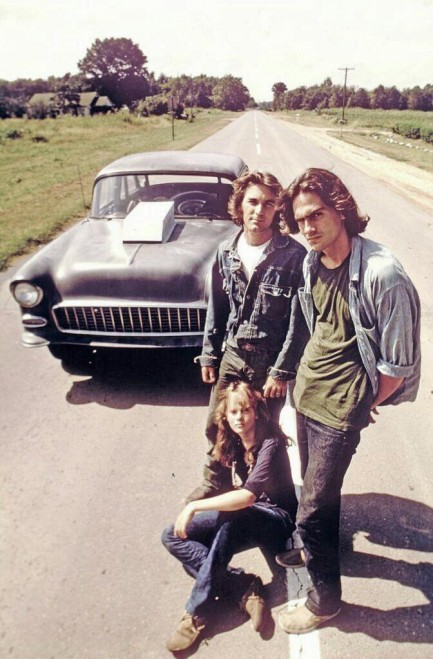
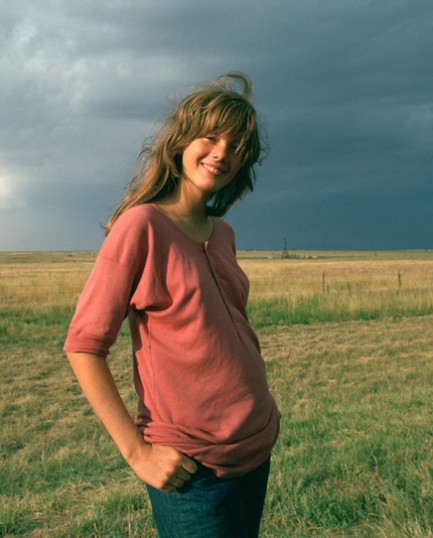
| Vintage Pulp | Mar 10 2013 |

Below, the Esquire monthly calendar of 1952 with twelve paintings (plus an inset close-up of Miss January on the cover) by Ernest Chiriacka, one of the true kings of pin-up art.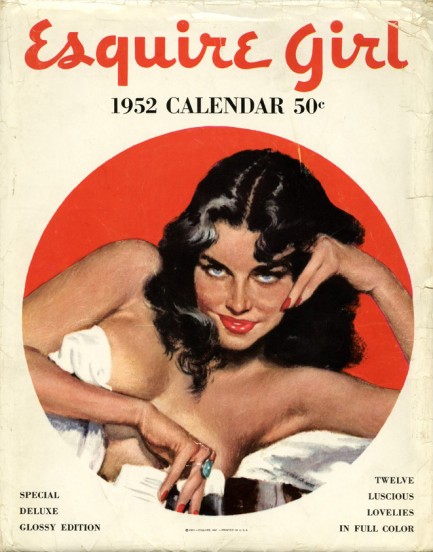
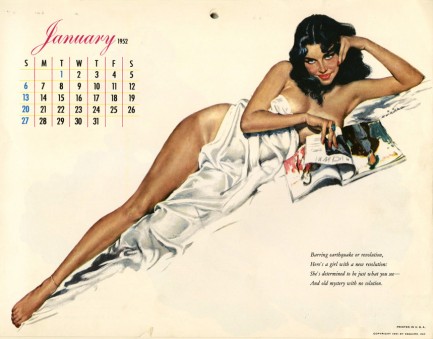
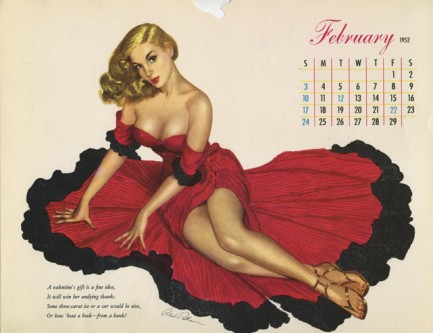
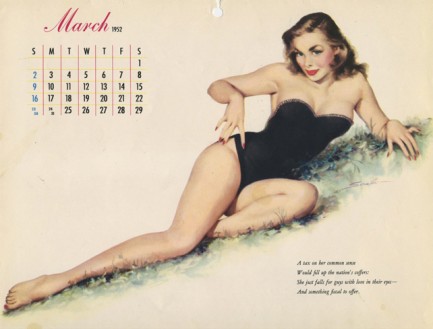
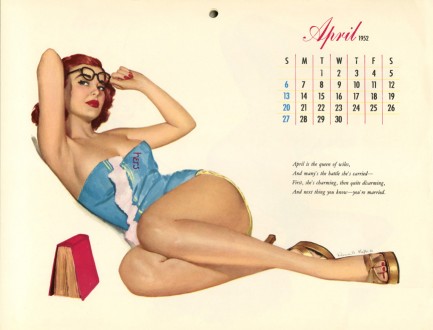
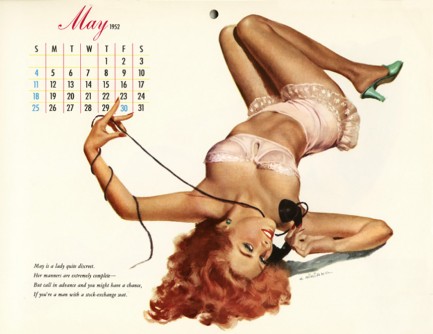
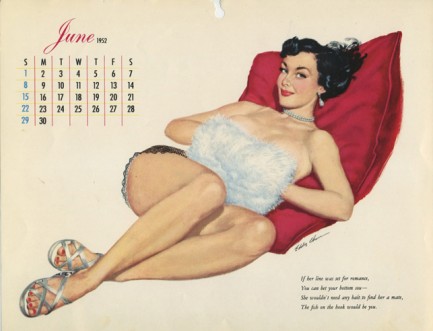
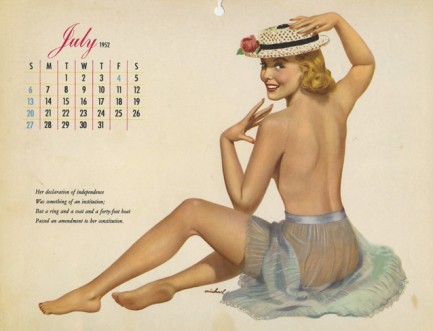
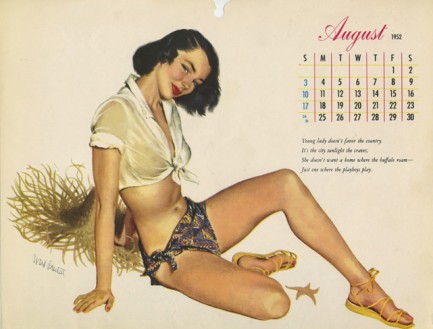
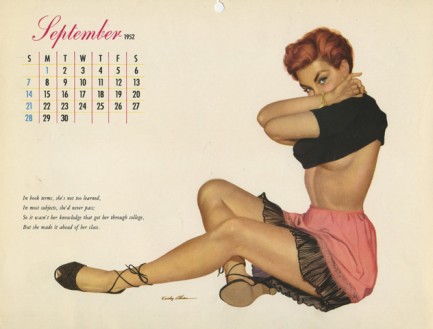
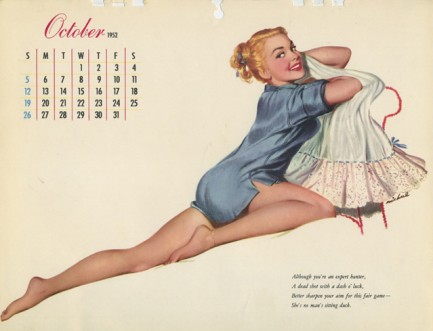
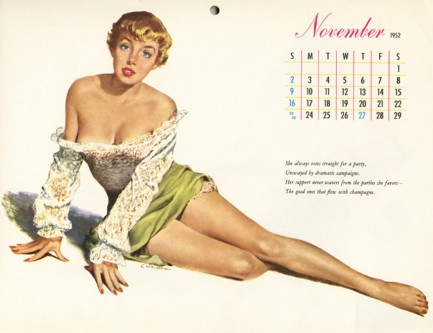
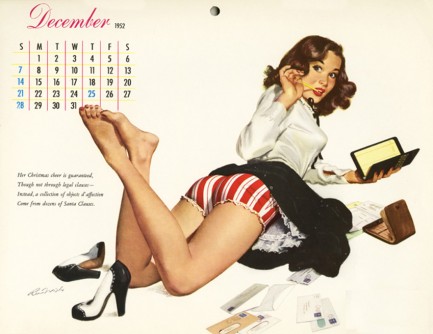
| Vintage Pulp | Mar 2 2012 |

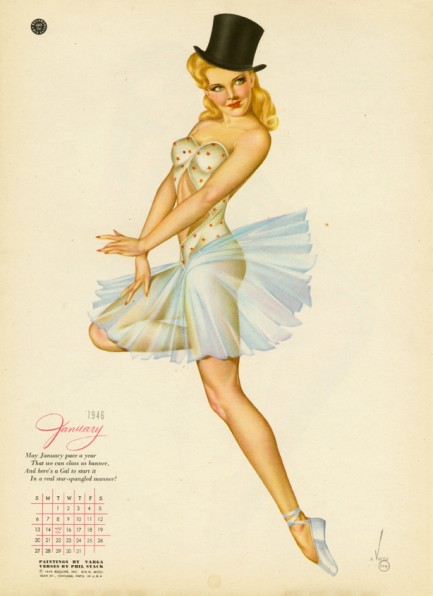
During our digging around at the Denver Book Fair we found one of the greatest calendars ever printed. This is not that calendar. So just imagine what we have in store. No, this is just a lil’ ole Varga calendar, published by Esquire magazine in 1946, and featuring twelve of Alberto Vargas’ classic pin-up paintings. In 1946 Vargas was doing quite well for himself, having established himself as one of the pre-eminent pin-up artists in the world. That success came to an abrupt halt that same year when Vargas lost a legal dispute with Esquire. It wasn’t until Playboy hired him in 1959 to paint a monthly Vargas Girl for the magazine that he regained a solid financial footing and reclaimed his throne as a top pin-up artist. Vargas died in 1982, but his work has continued to increase in value, with originals routinely auctioning for $10,000 or more. Actually, if you go online you even see sellers asking ten dollars for individual Vargas pages ripped from his old calendars. That strikes us as a bit extreme, but then we’re cheap, so what do we know? See the other Varga calendar we posted here.
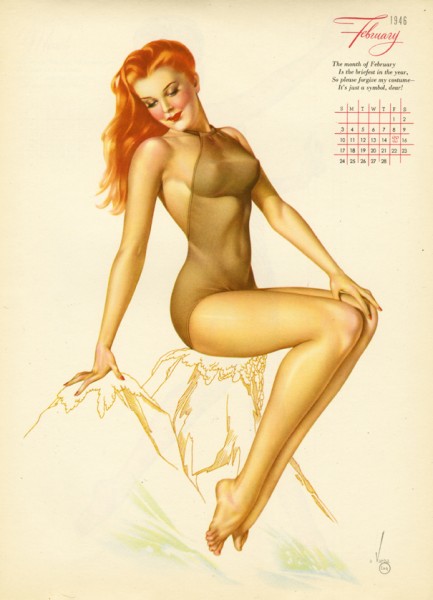
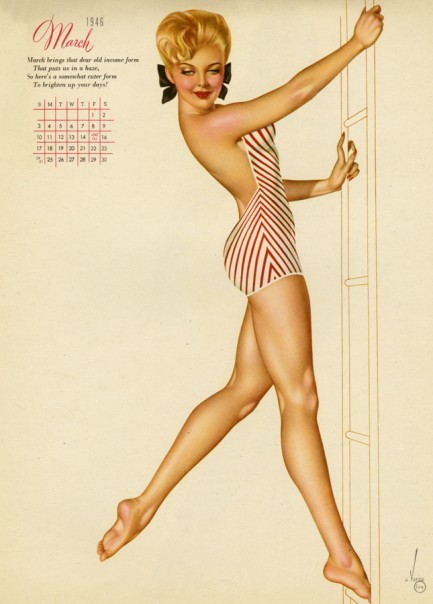
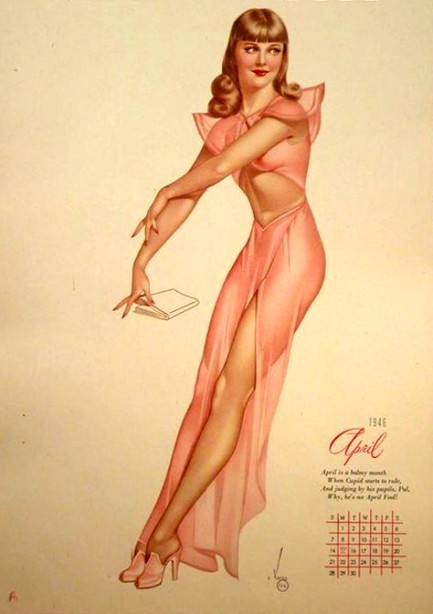
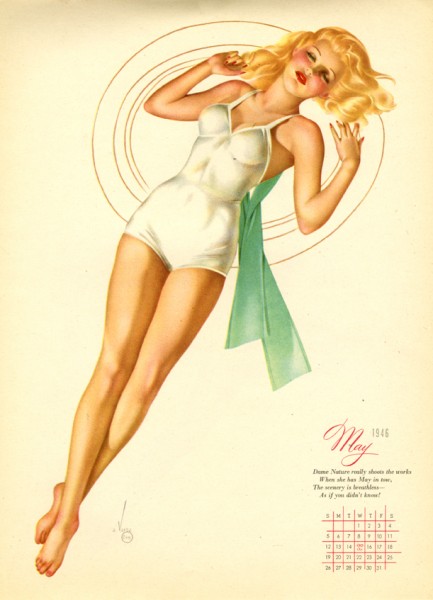
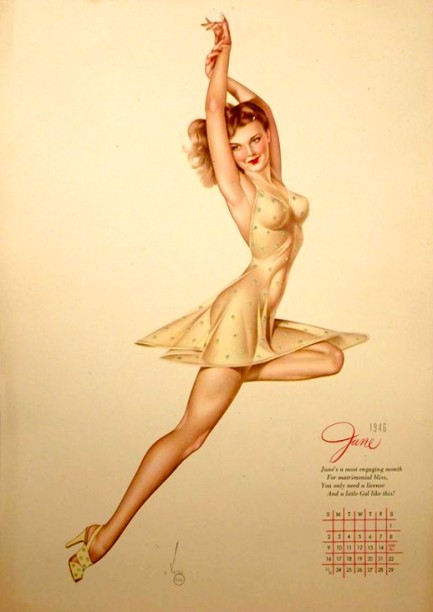
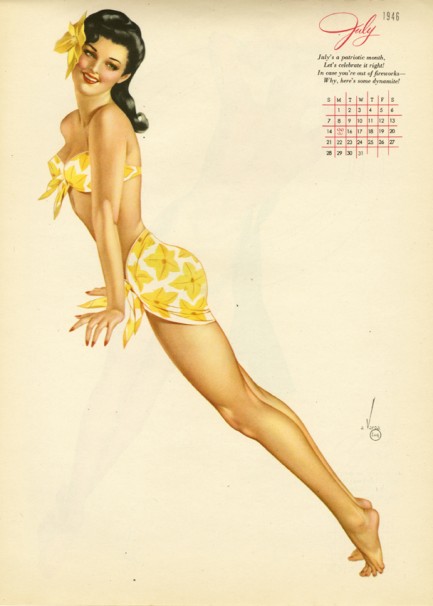
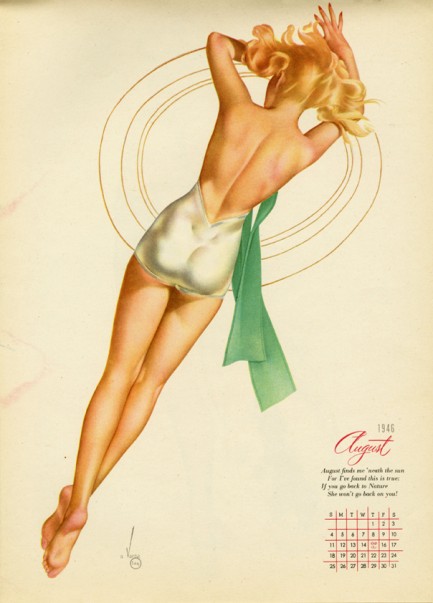
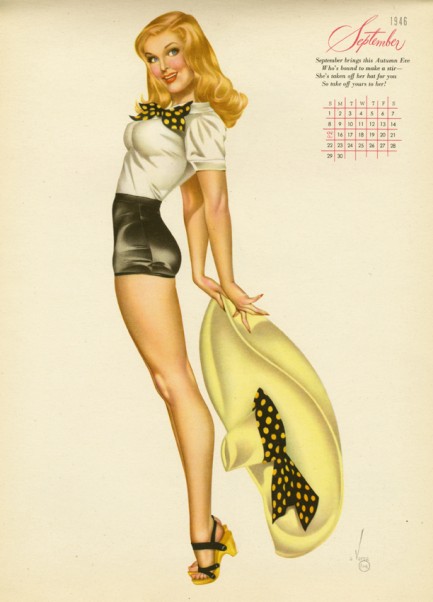
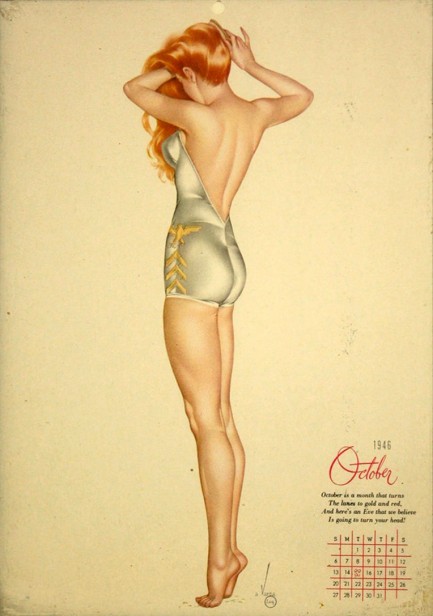
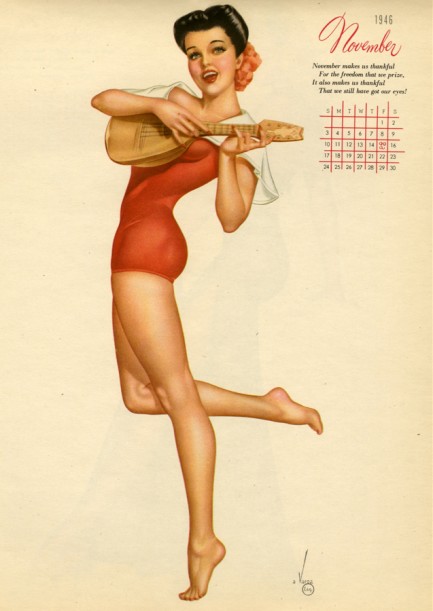
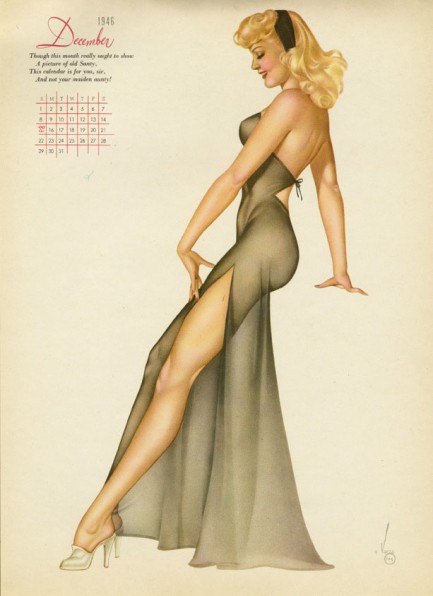
| Vintage Pulp | Jan 1 2012 |

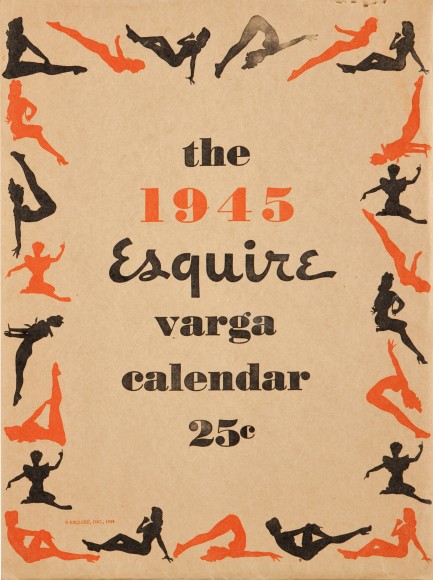
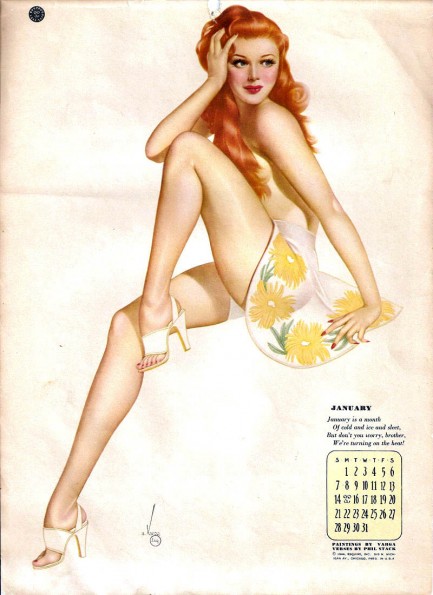
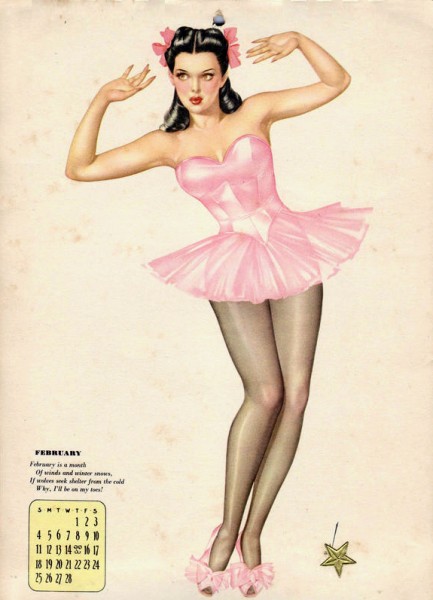
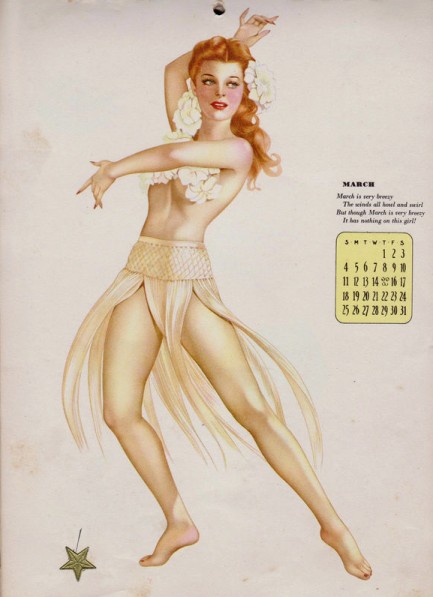
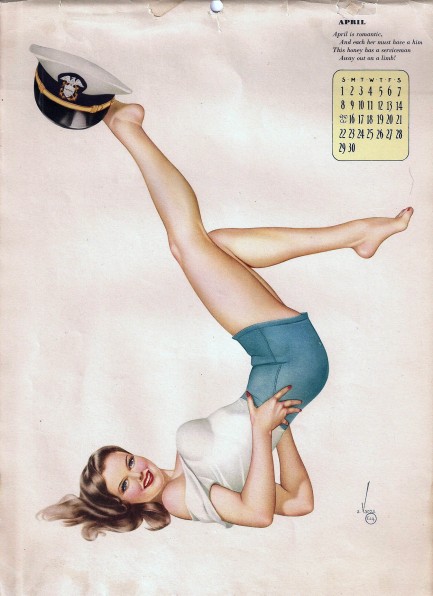
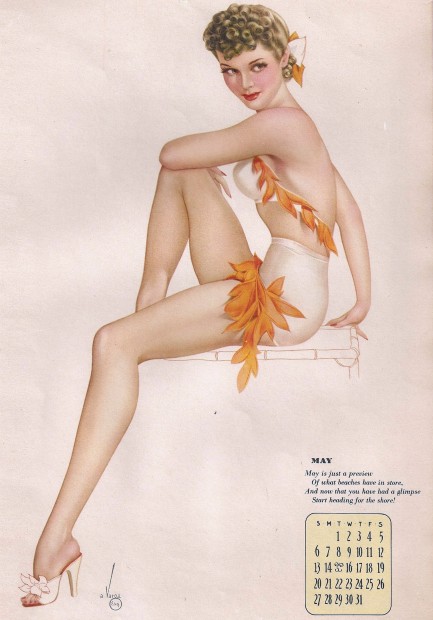
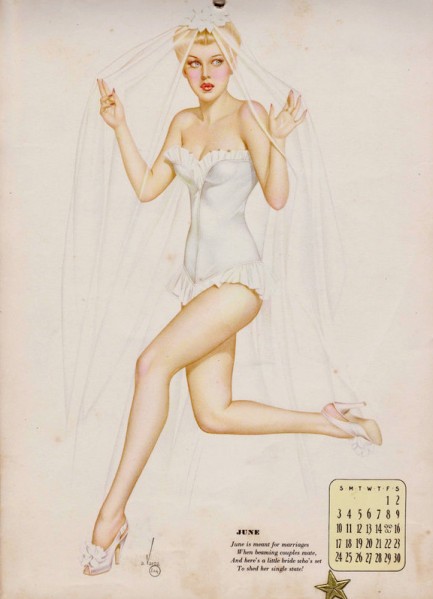
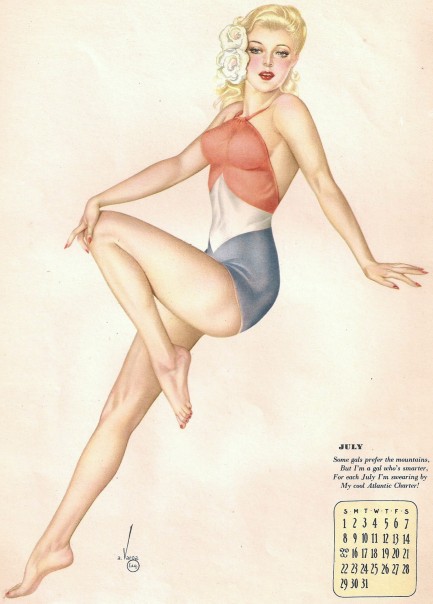
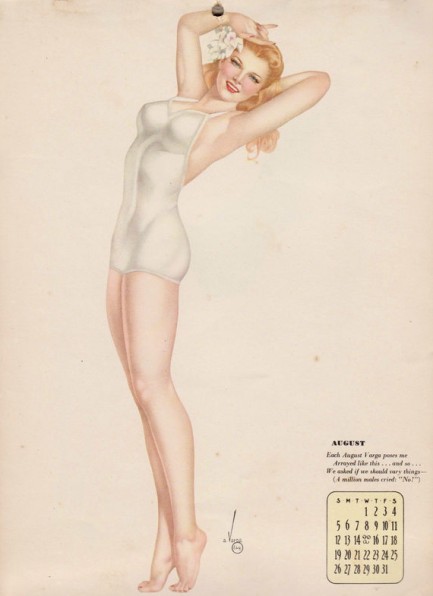
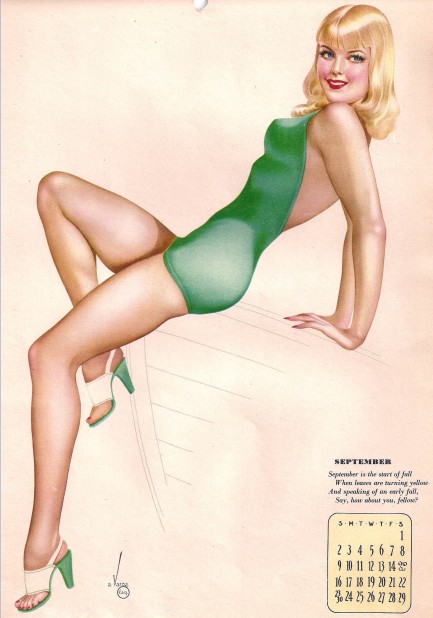
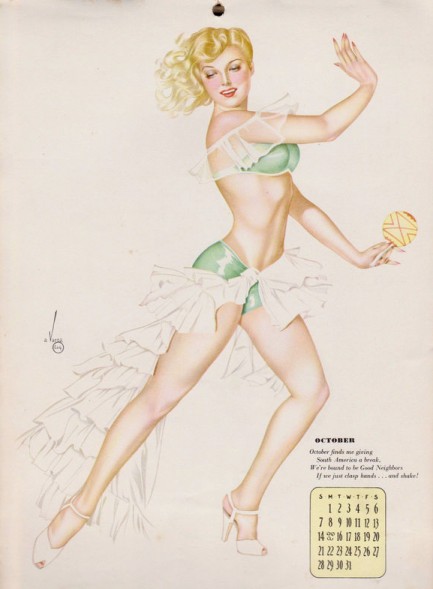
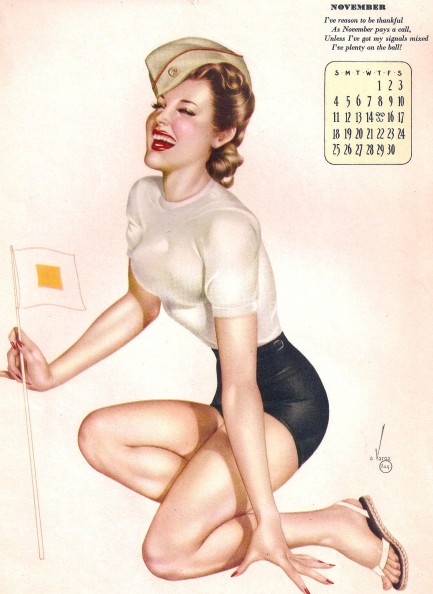
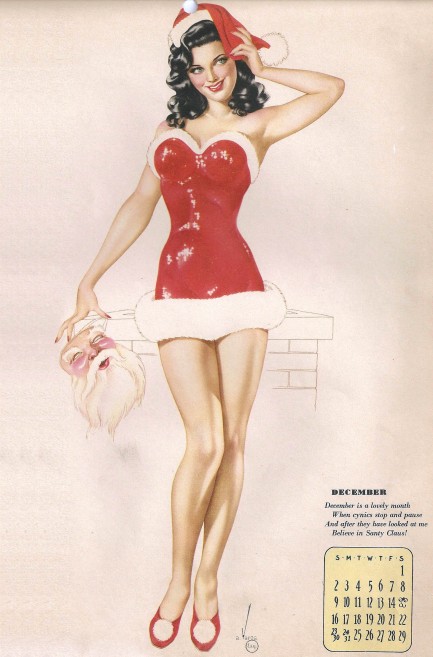
Above, a 1945 Esquire magazine pin-up calendar by Peruvian artist Joaquin Alberto Vargas y Chávez, who back then went only by the moniker Varga. We can’t think of a better way to start the year than with a dozen of his paintings. Well, maybe a hangover cure would be the best way, but this is a close number 2.




































































